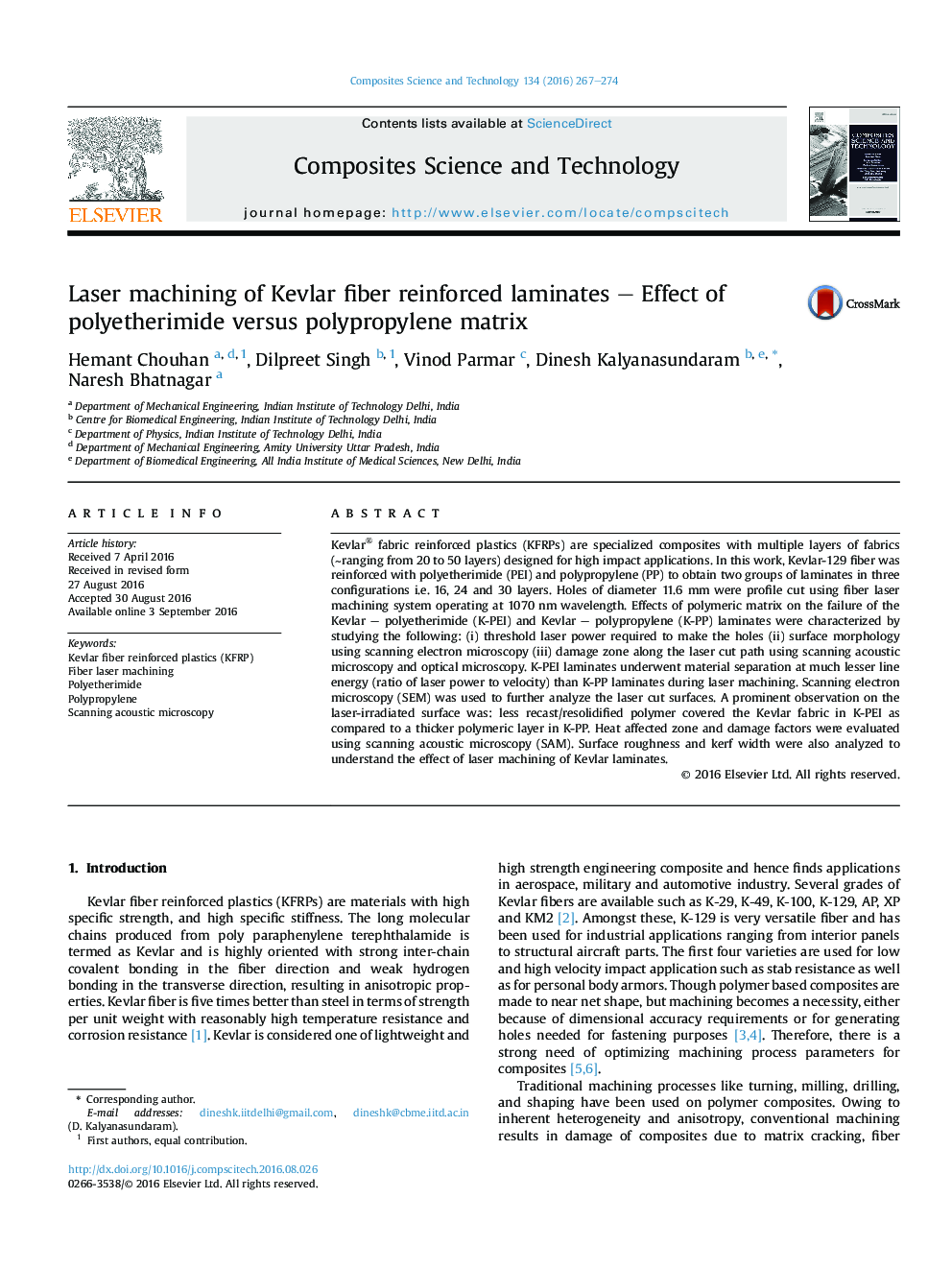| Article ID | Journal | Published Year | Pages | File Type |
|---|---|---|---|---|
| 7215153 | Composites Science and Technology | 2016 | 8 Pages |
Abstract
Kevlar® fabric reinforced plastics (KFRPs) are specialized composites with multiple layers of fabrics (â¼ranging from 20 to 50 layers) designed for high impact applications. In this work, Kevlar-129 fiber was reinforced with polyetherimide (PEI) and polypropylene (PP) to obtain two groups of laminates in three configurations i.e. 16, 24 and 30 layers. Holes of diameter 11.6Â mm were profile cut using fiber laser machining system operating at 1070Â nm wavelength. Effects of polymeric matrix on the failure of the Kevlar - polyetherimide (K-PEI) and Kevlar - polypropylene (K-PP) laminates were characterized by studying the following: (i) threshold laser power required to make the holes (ii) surface morphology using scanning electron microscopy (iii) damage zone along the laser cut path using scanning acoustic microscopy and optical microscopy. K-PEI laminates underwent material separation at much lesser line energy (ratio of laser power to velocity) than K-PP laminates during laser machining. Scanning electron microscopy (SEM) was used to further analyze the laser cut surfaces. A prominent observation on the laser-irradiated surface was: less recast/resolidified polymer covered the Kevlar fabric in K-PEI as compared to a thicker polymeric layer in K-PP. Heat affected zone and damage factors were evaluated using scanning acoustic microscopy (SAM). Surface roughness and kerf width were also analyzed to understand the effect of laser machining of Kevlar laminates.
Related Topics
Physical Sciences and Engineering
Engineering
Engineering (General)
Authors
Hemant Chouhan, Dilpreet Singh, Vinod Parmar, Dinesh Kalyanasundaram, Naresh Bhatnagar,
